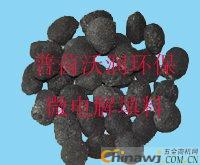Sewage treatment is a comprehensive and efficient method used to manage urban domestic wastewater and industrial effluent. It combines economic, scientific, and practical approaches to ensure the safe and sustainable disposal of contaminated water. The process typically involves several stages, including physical, chemical, physicochemical, and biological methods, each playing a key role in removing pollutants effectively. Physical methods involve mechanical or physical separation techniques such as filtration, sedimentation, centrifugation, and flotation. These processes are often used for the removal of suspended solids and large particles from the wastewater. Chemical methods, on the other hand, rely on chemical reactions to neutralize, oxidize, reduce, or precipitate harmful substances. Common techniques include neutralization, oxidation, coagulation, and chemical precipitation. These steps are essential for breaking down complex compounds and reducing toxicity. Physicochemical methods combine both physical and chemical processes. Examples include adsorption, ion exchange, extraction, and reverse osmosis. These techniques are particularly useful for removing dissolved contaminants and improving water quality. Biological methods utilize microorganisms to break down organic matter through metabolic processes. Technologies like activated sludge, biofilters, and oxidation ponds are widely used for their efficiency and cost-effectiveness. One advanced technique in this field is internal electrolysis, also known as iron-carbon micro-electrolysis. This process uses a potential difference of approximately 1.2 volts to generate an electric current without requiring an external power source. When the system comes into contact with wastewater, it creates multiple galvanic cells, leading to the degradation of organic pollutants through electrochemical reactions. Weifang Puyin Runrun Iron-Carbon Filler is a high-performance solution designed for treating difficult-to-degrade organic pollutants. Its key innovations include: (1) A multi-metal alloy structure created through high-temperature melting, ensuring a stable "primary battery" effect and preventing electrode separation. (2) A microporous design that provides a large surface area and uniform flow channels, enhancing reaction efficiency and current density. (3) High activity, low specific gravity, no passivation, and long-term stability, allowing for fast and consistent performance. (4) Customizable catalytic components tailored to different types of wastewater, increasing flexibility and effectiveness. (5) During operation, the active iron acts as an anode, continuously releasing electrons and dissolving into the water, while the carbon cathode is carried away in fine particles. This allows for easy replenishment and reduced maintenance. (6) Integrates multiple mechanisms such as oxidation, reduction, flocculation, adsorption, and coprecipitation for thorough treatment. (7) Cost-effective solution that significantly improves biodegradability and removes organic pollutants efficiently. (8) Flexible design that can be adapted to various system sizes and user requirements. (9) Standard specifications: 1cm x 3cm. (10) Technical parameters: specific gravity of 1.1 tons per cubic meter, specific surface area of 1.2 m²/g, void ratio of 65%, and physical strength of ≥1000 kg/cm². Weifang Puyin Runrun Iron-Carbon Filler Company guarantees: (1) All samples are produced directly by our factory, and customers can keep them for inspection. A tenfold penalty applies if any issues arise. (2) Our team of engineers offers 24/7 support, free process design, and tank layout drawings. (3) Under pH 3–4 conditions, annual packing loss is less than 15%, verified by Sun Yat-sen University’s environmental lab over six months and confirmed by clients. This filler is ideal for various types of wastewater, including: (1) Dyeing, chemical, pharmaceutical, coking, and petroleum wastewater – significantly improves BOD/COD ratios. (2) Printing and dyeing, leather, papermaking, and wood processing wastewater – effective for decolorization, COD, and ammonia nitrogen removal. (3) Electroplating, printing, mining, and heavy metal-containing wastewater – efficiently removes heavy metals. (4) Organic phosphorus and chlorine agricultural wastewater – enhances biodegradability, removes phosphorus, and sulfides.

High Bay Lamp,High Bay Led Light Fixtures,Finished Street Lights,Street Light With Led
Changzhou Jingui Lighting Technology Co., Ltd , https://www.czjglighting.com